Working digitally with an overseas dental lab is not just about transferring scans—it is about creating a reliable, end-to-end workflow. Success depends on compatibility, communication, and quality systems that keep cases moving without disruption.
Key factors buyers should evaluate include:
- File compatibility and secure transfer – confirm accepted formats, apply naming standards, and use encrypted portals with audit trails.
- Communication and workflow alignment – set response-time expectations, use structured case portals, and define approval loops.
- Technology stack and platforms – select scanners, CAD/CAM suites, and cloud tools that integrate smoothly with your lab.
- Turnaround and logistics – account for production timelines, customs clearance, and align submissions with lab schedules.
- Quality control and liability – verify QA checkpoints, remake policies, and confirm certifications and responsibility clauses.
- Long-term collaboration – build trust through reviews, staff training, and cultural alignment with a digitally capable partner.
By approaching overseas lab partnerships with these dimensions, procurement teams turn outsourcing into a repeatable digital process. The payoff is fewer delays, lower remake rates, and a stable foundation for scaling implant and restorative cases across borders.
What a Digital Workflow Looks Like with an Overseas Dental Lab
A digital workflow with an overseas dental lab follows a structured, step-by-step process that turns intraoral scans into completed restorations delivered across borders. Understanding each stage helps procurement teams align expectations, avoid confusion, and build smoother collaboration with their partners.
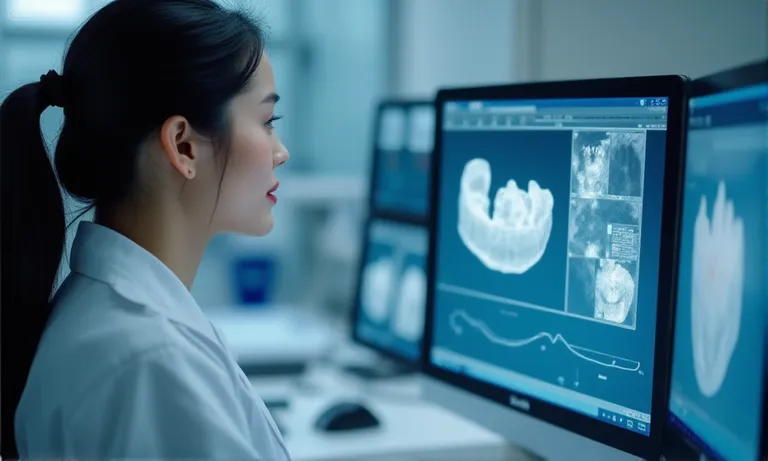
overseas-dental-lab-digital-workflow-stages
Key stages from scan to delivery (intraoral scan → CAD/CAM design → manufacturing → QC → shipment)
The digital workflow usually begins with the clinic capturing intraoral scans. Files are then transferred to the lab, where CAD software is used to design the restoration. After design approval, CAM milling or 3D printing produces the restoration, which undergoes layering, finishing, and quality control. Finally, the completed case is packaged and shipped internationally. Each handoff requires clarity to prevent data loss or delays.
Common file types and ecosystems (STL/PLY/OBJ, DICOM; 3Shape, exocad, Medit)
Most overseas labs accept STL as the universal standard, while PLY and OBJ formats support color and texture data. DICOM files are used for CT imaging, especially in implant planning. On the software side, 3Shape, exocad, and Medit are the most common ecosystems. Procurement teams should confirm compatibility early, since mismatches in file type or software version often create rework.
Roles, handoff points, and responsibilities between clinic and lab partner
Smooth collaboration depends on clear division of roles. Clinics are responsible for capturing accurate scans, completing digital prescriptions, and submitting case notes or photos. The lab manages file intake, design proposals, production, and quality checks. Approval points—such as margin confirmation or design approval—should be agreed in advance to avoid time-zone delays. Overseas dental labs like Raytops Dental Lab often provide digital intake portals that clearly log each responsibility, ensuring accountability across both sides.
A digital workflow is only as strong as its weakest link. When both clinic and lab understand their roles, use compatible tools, and manage handoffs carefully, digital outsourcing becomes predictable, efficient, and scalable.
Common Challenges and Risks in Digital Collaboration with Overseas Labs
Digital outsourcing can save time and costs, but buyers often face recurring challenges when working with overseas dental labs. Understanding these risks upfront helps procurement teams set realistic expectations and avoid costly delays.
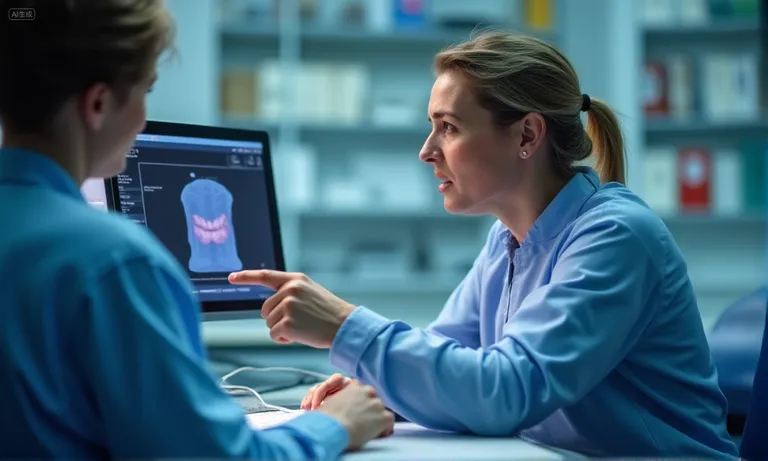
overseas-dental-lab-digital-collaboration-challenges
Cross-platform file compatibility and broken metadata across CAD/CAM systems
File compatibility remains one of the most common friction points. While STL is universal, metadata such as color, margin lines, or bite information can be lost when exporting from one CAD system and importing into another. For example, a case designed in exocad may not display margin marks properly when opened in 3Shape. Procurement managers should confirm which formats are fully supported before sending cases to overseas partners.
Time-zone delays, language gaps, and unclear approval loops
Common coordination risks include:
- Time-zone delays: Responses may take 12–24 hours, slowing urgent cases.
- Language gaps: Technical instructions may be misinterpreted, leading to design errors.
- Unclear approvals: Without a defined workflow, cases may stall while waiting for feedback.
These factors compound when multiple cases are in progress, creating hidden bottlenecks.
Longer turnaround or remakes caused by missing instructions and incomplete files
Incomplete prescriptions, absent photos, or unclear bite registration often force labs to pause production or remake cases. A missing occlusion note can add days to a case, even if the lab’s internal workflow is efficient. Overseas labs rely heavily on the clinic to submit complete and accurate files—otherwise, even advanced digital workflows cannot compensate for gaps.
Hidden costs in tooling and platforms (scanner licenses, portals, cloud transfer)
Beyond clinical costs, digital collaboration often introduces hidden expenses:
- Scanner licenses: Some scanner vendors charge for export functions.
- Case portals: Subscription fees may apply to maintain cloud-based portals.
- Data transfer: Large STL or DICOM files may require paid storage or transfer solutions.
These costs accumulate over time and should be factored into total procurement budgets.
Challenges are inevitable, but they are manageable with clear agreements, compatible tools, and structured communication. Overseas dental labs like Raytops Dental Lab help reduce these risks by providing pre-validated file formats, clear approval protocols, and bundled portal access, making cross-border digital workflows less prone to disruption.
How to Ensure File Compatibility and Secure Cross-Border Data Transfer
When working digitally with an overseas dental lab, file compatibility and secure data transfer are two of the most important foundations. Without them, even the most advanced workflow will face delays, remakes, or compliance risks. Procurement teams can minimize disruption by standardizing formats, validating data before submission, and securing all transfers.
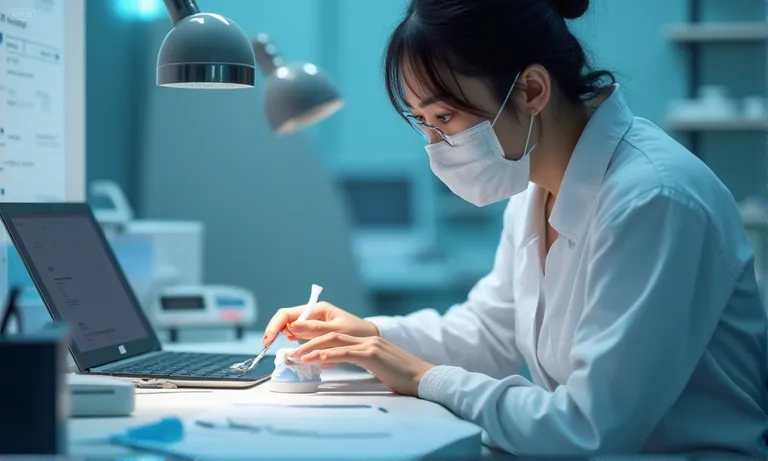
dental-lab-secure-data-transfer-checklist
Accepted formats and data quality gates (STL/PLY/OBJ, DICOM; color, margin, bite)
| File Type | Common Use | Key Quality Gate | Risks if Ignored |
|---|---|---|---|
| STL | Universal 3D geometry | Margin clarity | Missing detail causes poor fit |
| PLY/OBJ | Color and texture | Accurate shade & gingiva data | Loss of esthetic accuracy |
| DICOM | CT and implant planning | Complete metadata, no corruption | Implant guide misalignment |
Labs often recommend STL as baseline, but complex cases benefit from PLY/OBJ or DICOM. Checking color fidelity, margin lines, and bite data before submission reduces downstream errors.
A pre-flight checklist before submission (naming, Rx completeness, photos, notes)
Procurement teams can standardize submissions by following a pre-flight checklist:
- Confirm consistent file naming convention (patient ID + date).
- Verify prescription (Rx) is complete with material, shade, and implant system details.
- Attach reference photos for esthetics and occlusion.
- Include notes on margin lines or special requests.
- Double-check files open correctly in viewing software before transfer.
Secure transfer methods and PHI safeguards (encrypted portals, audit trails, access control)
To comply with privacy standards and protect patient health information (PHI), secure methods are essential:
- Encrypted portals: Avoid email attachments; use platforms with end-to-end encryption.
- Audit trails: Record who uploaded and accessed files for accountability.
- Access control: Restrict downloads to authorized clinic and lab staff only.
- Cloud redundancy: Ensure backup copies exist to avoid loss during transit.
Common error-proofing tips for scans and margin design to reduce rework
Most remakes from digital outsourcing stem from poor scan quality or incomplete margin capture. Clinics can reduce errors by ensuring dry fields during scanning, capturing full arch context for occlusion, and confirming margins in viewer software before approval. Overseas dental labs like Raytops Dental Lab often run incoming scans through automated QC filters to flag incomplete files, saving days of potential delays.
Compatibility and security are not optional—they are prerequisites. By treating file preparation and transfer as a standardized process, procurement teams can avoid hidden costs, protect patient data, and achieve smoother collaboration with overseas labs.
Best Communication Practices for Working with an Overseas Lab Partner
Clear communication is one of the strongest predictors of success in digital outsourcing. When clinics and overseas dental labs agree on response times, communication channels, and approval workflows, collaboration becomes predictable and far less prone to errors or remakes.
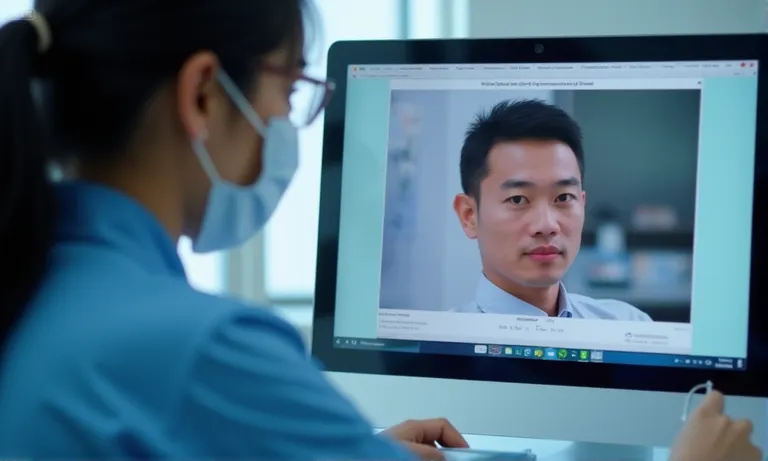
overseas-dental-lab-communication-practices
Define response-time expectations and case priority (SLA/working windows)
Strong collaborations set expectations for response times. For example:
- Routine cases: Reply within 24 hours.
- Urgent cases: Immediate acknowledgment, design turnaround within agreed hours.
- Defined working windows: Both parties align on overlapping time slots despite time-zone differences.
This creates accountability and helps clinics schedule patients with confidence.
Use case portals and structured channels for assets, comments, and approvals
Unstructured communication—emails scattered across multiple staff—often leads to lost files or overlooked comments. Case portals centralize assets, design revisions, and chat history in one place, creating a single source of truth. Clinics benefit from searchable records, while labs gain clarity on instructions and approvals. Structured platforms also allow procurement managers to track performance across multiple cases.
Set a clear design-approval protocol and change-request workflow
A structured approval process avoids confusion and delays:
- Lab submits initial design proposal.
- Clinic reviews in a 3D viewer and provides consolidated feedback.
- Lab implements changes, marking version updates.
- Final approval is logged before production begins.
This prevents back-and-forth emails and ensures accountability at every stage.
Reliable communication transforms potential risks into managed workflows. Overseas dental labs such as Raytops Dental Lab have adopted SLAs and structured case portals, giving procurement teams confidence that instructions are followed, approvals are documented, and urgent cases are not lost in translation.
Which Digital Tools and Platforms Best Support Overseas Lab Collaboration
Selecting the right tools is essential for clinics working with overseas dental labs. Compatibility and transparency in digital systems reduce delays, ensure design integrity, and minimize costly remakes. A well-matched digital stack allows both sides to share files, review designs, and track progress without friction.
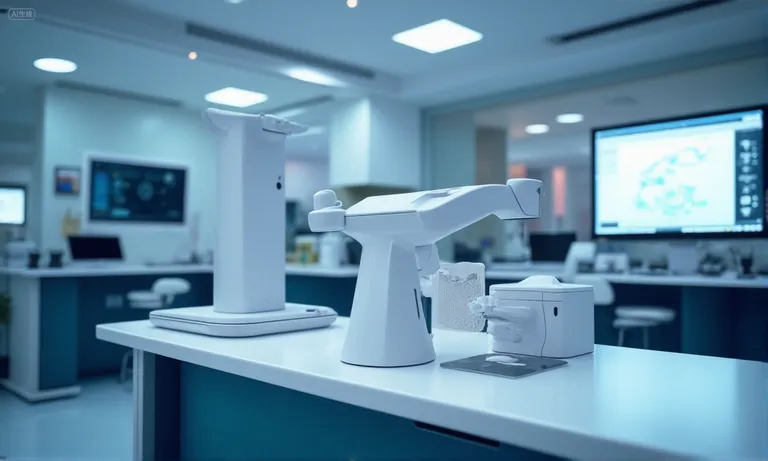
best-digital-tools-for-overseas-dental-lab-collaboration
Core stack selection: scanners, CAD/CAM suites, and lab information systems (LIS/LIMS)
A successful workflow starts with a compatible digital stack.
| Tool Category | Common Options | Collaboration Role |
|---|---|---|
| Intraoral Scanners | 3Shape TRIOS, Medit i700, Carestream | Capture and export scans in STL/PLY/OBJ |
| CAD/CAM Suites | exocad, 3Shape Dental System, Dental Wings | Design restorations, manage libraries |
| Lab Information Systems (LIS/LIMS) | Evident, LabStar, custom LIS | Track cases, manage approvals and logistics |
Selecting tools that share standard file types and allow API or portal integration reduces cross-platform errors.
Cloud collaboration and case tracking (portals, storage, versioning)
- Case portals: Provide a centralized hub for uploads, approvals, and notes.
- Cloud storage: Allows secure sharing of large DICOM or STL files with audit trails.
- Versioning tools: Ensure that both clinic and lab work from the latest approved design.
These systems minimize miscommunication and give procurement managers visibility into every stage of production.
Virtual try-ins and viewer tools to reduce chair time and remakes
Some overseas labs now support virtual try-ins using 3D viewers or simulation platforms. Dentists can check occlusion, margins, and esthetics before production, reducing the chance of remakes. By simulating adjustments digitally, chair time is shortened, and patients face fewer repeat visits.
Integration tips to keep systems compatible between clinic and lab
- Align on file type standards (STL for restorations, DICOM for scans).
- Verify both lab and clinic use compatible CAD/CAM libraries.
- Test case uploads through the chosen portal before scaling.
- Document integration protocols and assign responsibility for updates.
Well-chosen platforms turn outsourcing into a structured, predictable process. Overseas dental labs such as Raytops Dental Lab actively work across 3Shape, exocad, and Medit ecosystems, showing clinics that compatibility is not an obstacle but a solved process when handled professionally.
How to Manage Turnaround Time in a Digital Workflow with an Overseas Lab
Turnaround time is one of the first things procurement managers look at when outsourcing digitally. Digital workflows can shorten production, but cross-border logistics, approvals, and case complexity still add variability. By understanding each stage of the timeline, buyers can plan more accurately and prevent schedule disruptions.
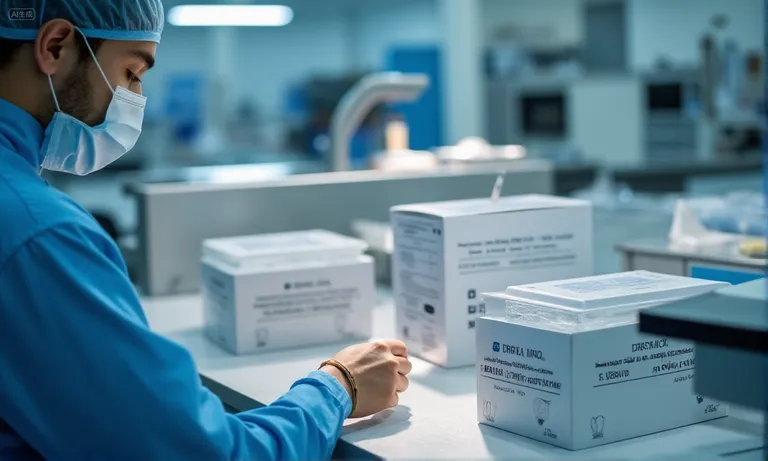
managing-digital-turnaround-time-overseas-dental-lab
Typical digital production and shipping timelines by case type
| Case Type | Digital Production Time | International Shipping (Avg.) | Total Turnaround (Estimate) |
|---|---|---|---|
| Single crowns/bridges | 2–3 days | 3–5 days | 5–8 days |
| Full-arch zirconia | 4–6 days | 3–5 days | 7–11 days |
| Implant abutments | 3–5 days | 3–5 days | 6–10 days |
| Complex hybrids | 6–8 days | 4–6 days | 10–14 days |
These are averages; actual times vary by lab capacity and shipping routes.
What actually drives lead time (complexity, queue, approvals, carrier)
- Case complexity: Multi-unit restorations and custom abutments take longer in design and milling.
- Queue management: Labs batch jobs by material and machine, which can extend waiting times.
- Approval loops: Delays often come from slow feedback on design previews.
- Carrier performance: Customs clearance and seasonal surges affect delivery speed.
Align submissions to the lab’s production windows; build buffers for customs
- Submit cases early in the week to align with production runs.
- Keep Rx forms and scans complete to avoid back-and-forth requests.
- Build a 1–2 day buffer for customs, especially during holiday seasons.
- Track shipments proactively and communicate expected arrival to scheduling teams.
Proactive planning transforms turnaround time from a risk into a predictable KPI. Overseas dental labs such as Raytops Dental Lab often share production calendars and shipping cutoffs with clients, enabling clinics to set patient appointments with greater confidence.
What Quality Controls and Liability Measures Keep Digital Outsourcing Reliable?
Outsourcing implant or crown cases overseas only works if both technical quality and legal protection are well defined. Even with the speed of digital workflows, the reliability of an overseas dental lab depends on how systematically it manages QA checkpoints, remake policies, compliance standards, and liability terms. Procurement teams should treat these as non-negotiable pillars when selecting a partner.

digital-quality-control-overseas-dental-lab
In-process and final QA for scans and CAD/CAM (checklists, measurement tolerance)
- Scan verification: Margins, bite registration, and soft-tissue detail are reviewed before design begins.
- CAD checks: Automated software alerts for undercuts, spacing, and margin gaps.
- Milling calibration: Machine tolerances are tested daily to keep micron-level accuracy.
- Final inspection: High-resolution photos and measurements compared against Rx before shipping.
Remake/adjustment policy and service-level clauses you should confirm
Reliable labs commit to remake or adjust cases at no cost if errors are within lab control. Service-level agreements (SLAs) often define remake windows, turnaround for adjustments, and shared shipping responsibilities. Buyers should confirm whether these clauses are written, not just verbal promises, as this protects against hidden costs in the event of repeat work.
Certifications and regulatory alignment (ISO, CE, FDA device listings)
| Certification | What It Covers | Why It Matters |
|---|---|---|
| ISO 13485 | Medical device quality management | Ensures controlled processes across design and production |
| CE Mark | EU device compliance | Required for restorations entering Europe |
| FDA Device Listing | US market compliance | Confirms lab products are legally cleared for US distribution |
These credentials provide assurance that materials and processes meet international standards, reducing regulatory risks during audits.
Liability and indemnification basics when outsourcing work abroad
When working across borders, liability allocation must be explicit. Contracts should state who bears responsibility for remakes, defective products, and potential patient claims. Indemnification clauses protect clinics from downstream risks if a restoration fails due to lab error. Labs like Raytops Dental Lab usually formalize these agreements with overseas clients, combining technical reliability with contractual clarity.
Clear QA systems and legal safeguards transform outsourcing from a cost-driven gamble into a predictable, professional relationship.
How to Build a Long-Term Working Relationship with an Overseas Dental Lab
A digital outsourcing relationship becomes sustainable when both clinic and lab treat collaboration as an ongoing system, not a one-off transaction. Long-term reliability depends on structured review mechanisms, cultural alignment, team training, and careful partner selection. Procurement teams who establish these practices create more predictable outcomes and stronger partnerships.

long-term-collaboration-overseas-dental-lab
Establish review cadence (case audits, scorecards, quarterly business reviews)
- Case-level audits: Spot-check scan margins, occlusion, and finish to catch systemic errors early.
- Performance scorecards: Track turnaround time, remake rate, and communication response speed against agreed KPIs.
- Quarterly business reviews (QBRs): Formal sessions to discuss recurring issues, align priorities, and plan investments in technology upgrades.
Navigate cultural nuances to keep feedback constructive and specific
Cross-border teams may interpret tone and criticism differently. Clinics can reduce friction by providing feedback in specific, measurable terms (e.g., “margin fit gap measured 80 μm above tolerance”) rather than vague judgments. Overseas labs like Raytops Dental Lab often train project managers to bridge language and cultural gaps, making collaboration smoother.
Train your team for digital workflow adoption and file-prep consistency
- Standard file protocols: Use agreed file naming, Rx forms, and image attachments.
- Digital literacy: Ensure clinical staff are trained to operate scanners and portals effectively.
- Error-prevention habits: Double-check bite registrations, shade references, and margin clarity before submission.
Training raises internal consistency, which reduces rework and makes outsourcing more predictable.
Criteria for choosing a reputable, digitally capable lab partner
| Selection Factor | Why It Matters | What to Look For |
|---|---|---|
| Digital ecosystem | Ensures seamless file exchange | Compatibility with 3Shape, exocad, Medit |
| Proven QA record | Lowers remake risk | Documented QC checkpoints and remake rate reports |
| Certifications | Demonstrates compliance | ISO 13485, CE, FDA device listing |
| Partnership maturity | Supports long-term scaling | Willingness to share KPIs and participate in QBRs |
Procurement teams that apply these criteria not only secure a capable partner but also reduce hidden risks of misalignment.
Sustained collaboration with an overseas dental lab requires structured routines, cultural awareness, and shared accountability. When both sides commit to continuous improvement, the relationship grows beyond price and speed into a dependable, long-term partnership.
Conclusion
Working digitally with an overseas dental lab is reliable when processes are structured, secure, and transparent. Beyond cost savings, long-term value comes from how well both sides align workflows, manage turnaround, and uphold quality.
The essentials include consistent file standards, protected data transfer, structured communication protocols, and enforceable quality controls. When procurement teams also confirm remake policies, certifications, and liability measures, outsourcing shifts from uncertain to predictable.
By partnering with an overseas dental lab such as Raytops Dental Lab, clinics gain a collaborator that invests in digital capability, accuracy, and accountability. The result is fewer delays, lower remake rates, and a stable foundation for scaling restorative and implant cases across borders.


